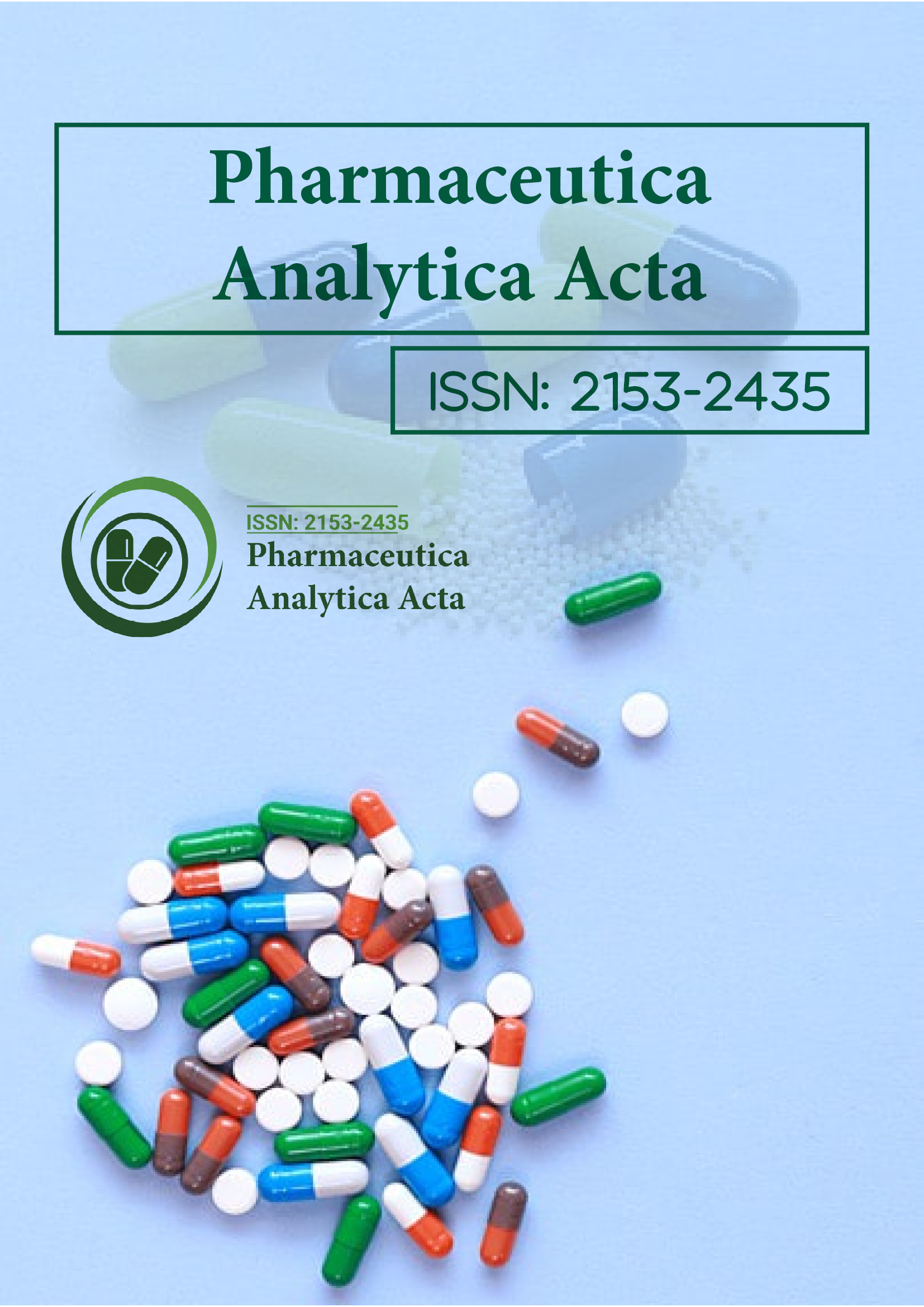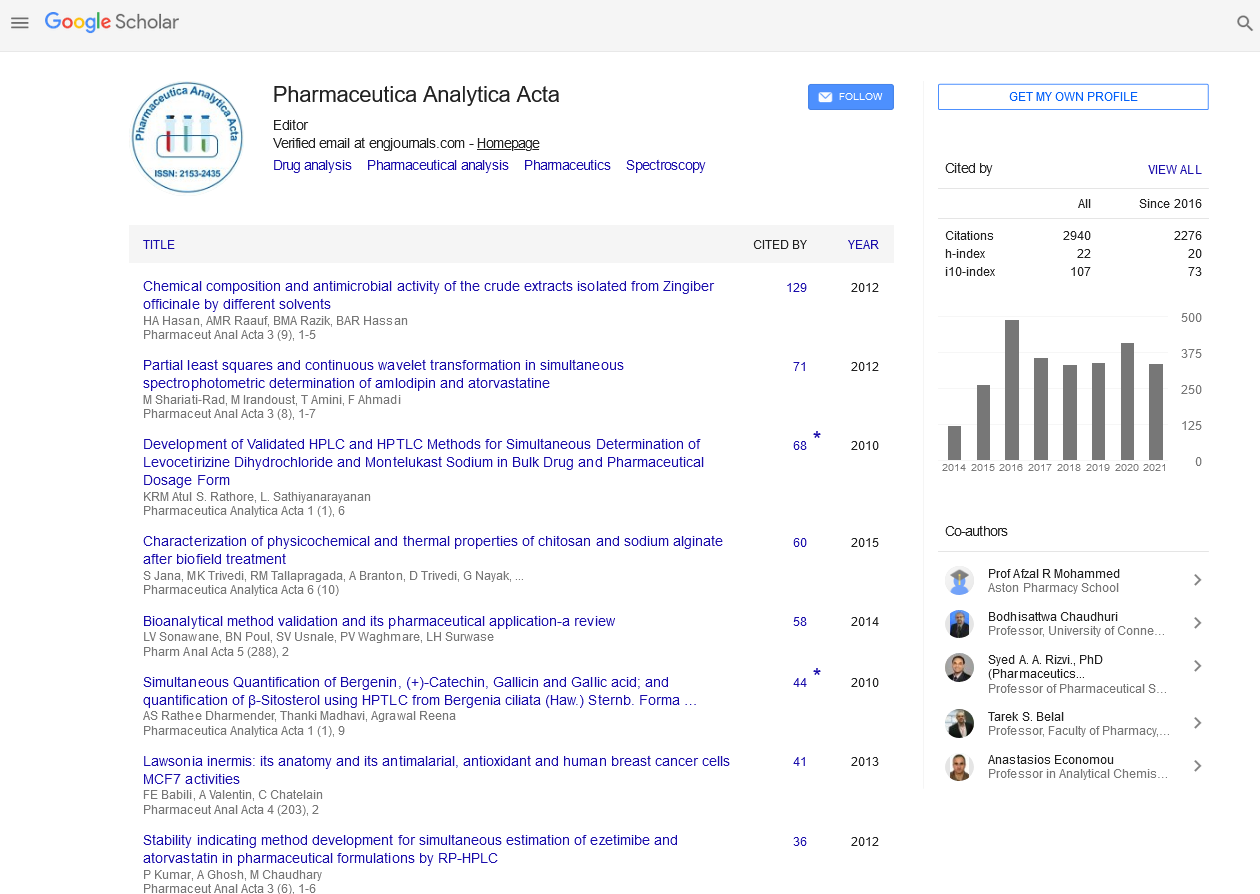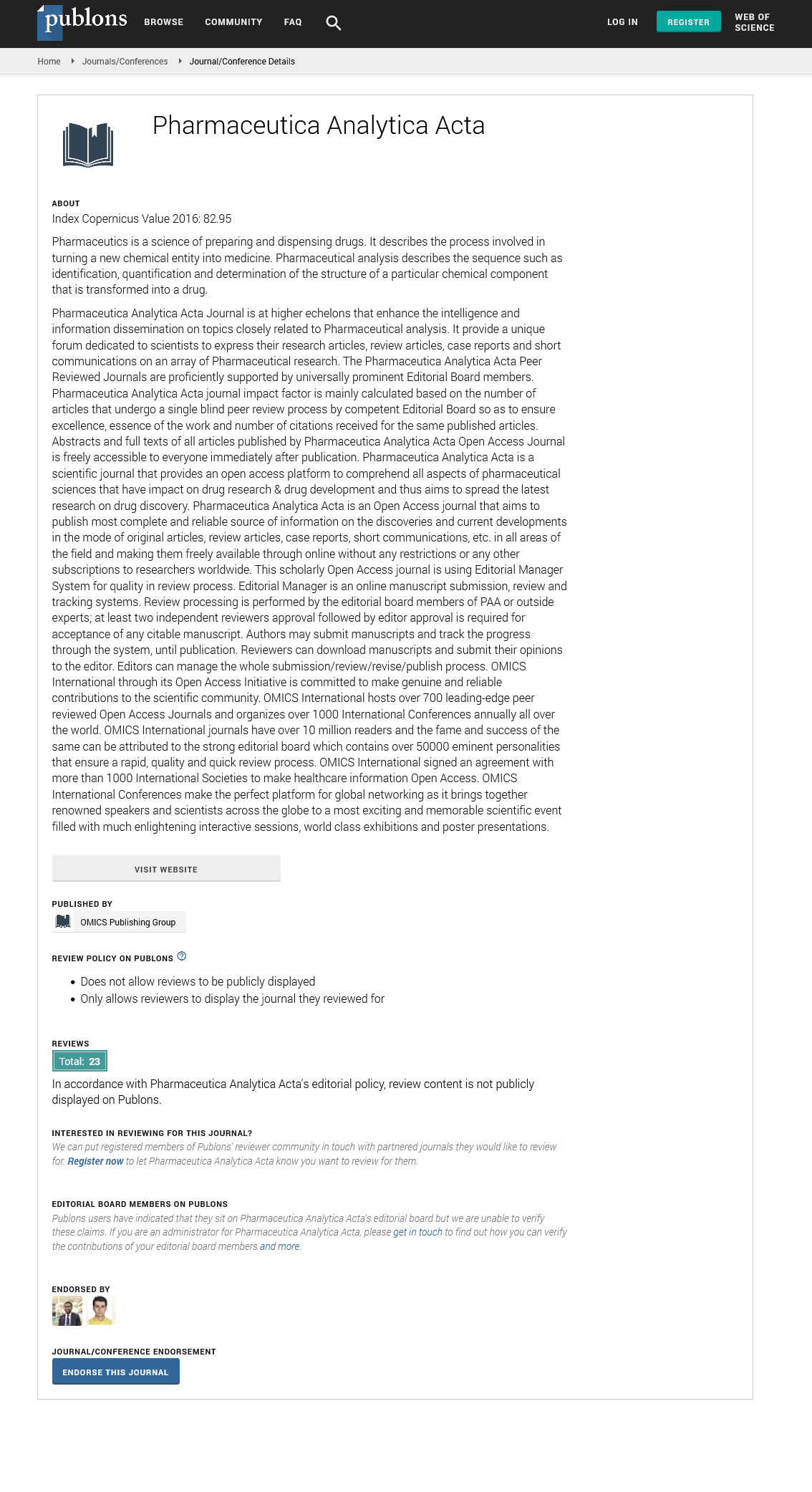Indexed In
- Open J Gate
- Genamics JournalSeek
- Academic Keys
- JournalTOCs
- The Global Impact Factor (GIF)
- China National Knowledge Infrastructure (CNKI)
- Ulrich's Periodicals Directory
- RefSeek
- Hamdard University
- EBSCO A-Z
- OCLC- WorldCat
- Publons
- Geneva Foundation for Medical Education and Research
- Euro Pub
- Google Scholar
Useful Links
Share This Page
Journal Flyer

Open Access Journals
- Agri and Aquaculture
- Biochemistry
- Bioinformatics & Systems Biology
- Business & Management
- Chemistry
- Clinical Sciences
- Engineering
- Food & Nutrition
- General Science
- Genetics & Molecular Biology
- Immunology & Microbiology
- Medical Sciences
- Neuroscience & Psychology
- Nursing & Health Care
- Pharmaceutical Sciences
Short Communication - (2025) Volume 16, Issue 3
The Potential and Challenges of Flavonoids in Atherosclerosis Intervention
Chunjie Wu*Received: 22-Feb-2024, Manuscript No. PAA-24-24998; Editor assigned: 26-Feb-2024, Pre QC No. PAA-24-24998 (PQ); Reviewed: 11-Mar-2024, QC No. PAA-24-24998; Revised: 04-Jun-2025, Manuscript No. PAA-24-24998 (R); Published: 11-Jun-2025, DOI: 10.35248/2153-2435.25.16.822
Description
Atherosclerosis, a chronic inflammatory condition, remains a leading cause of cardiovascular diseases globally. As the medical community endeavors to develop effective interventions, the spotlight has turned to flavonoids-a group of naturally occurring compounds widely distributed in fruits, vegetables, and beverages. This perspective article explores the emerging evidence on the beneficial effects of flavonoids in patients at atherosclerosis risk, specifically addressing their impact on blood pressure and cholesterol levels.
Before moving into the potential benefits of flavonoids, it is imperative to comprehend the complex exchange of factors contributing to atherosclerosis risk. Hypertension and dyslipidemia, characterized by elevated blood pressure and abnormal cholesterol levels, respectively, are fundamental contributors to the progression of atherosclerosis. Addressing these risk factors is important in the activity of effective preventive and therapeutic strategies.
Flavonoids, a diverse group of polyphenolic compounds, exhibit a spectrum of biological activities. Widely recognized for their antioxidant and anti-inflammatory properties, flavonoids have garnered attention as potential agents to mitigate atherosclerosis risk. The multitude of flavonoid subclasses, including flavonols, flavones, and flavanones, offers a rich palette for investigation into their cardiovascular benefits.
Numerous studies have explored the role of flavonoids in modulating blood pressure, an essential factor in atherosclerosis progression. The vasodilatory effects of flavonoids, attributed to their ability to enhance nitric oxide bioavailability, present a promising avenue for blood pressure regulation. This section critically examines the evidence from both animal and human studies, explain on the potential mechanisms and the clinical relevance of flavonoids in hypertension management.
Dyslipidemia, characterized by elevated levels of Low-Density Lipoprotein Cholesterol (LDL-C) and reduced High-Density Lipoprotein Cholesterol (HDL-C), contributes significantly to atherosclerosis. Flavonoids, through their multifaceted actions, have demonstrated the capacity to modulate lipid metabolism. This segment of the article synthesizes findings from preclinical and clinical studies, dissecting the impact of flavonoids on cholesterol synthesis, absorption, and transport.
To comprehend the intricate ways in which flavonoids exert their effects on blood pressure and cholesterol, a detailed exploration of underlying mechanisms is essential. This section moves into the molecular pathways involved, surround antioxidant and antiinflammatory pathways, endothelial function, and modulation of lipid regulatory genes. A comprehensive understanding of these mechanisms provides a foundation for the development of targeted therapeutic interventions.
Flavonoids are predominantly obtained through dietary sources, prompting an examination of practical recommendations for individuals at atherosclerosis risk. This section provides insights into the incorporation of flavonoid-rich foods in a heart-healthy diet, emphasizing the synergy between nutritional choices and pharmacological interventions. Dietary strategies and potential supplementation are explored within the context of overall cardiovascular health.
As with any therapeutic intervention, safety considerations are paramount. This section evaluates the safety profile of flavonoids, addressing potential interactions, contraindications, and adverse effects. Additionally, the article outlines potential future directions for research, emphasizing the need for largescale, well-designed clinical trials to establish definitive recommendations for the incorporation of flavonoids into cardiovascular care.
Conclusion
In conclusion, the analysis of flavonoids as beneficial agents in patients at atherosclerosis risk exhibits a complex yet potential area. From blood pressure regulation to cholesterol metabolism, flavonoids showcase multifaceted properties that merit further exploration. As the scientific community navigates the challenges of translating preclinical findings into clinical applications, the potential for flavonoids to play an essential role in cardiovascular health remains a compelling method for future research and therapeutic development.Citation: Chunjie Wu (2025) The Potential and Challenges of Flavonoids in Atherosclerosis Intervention. Pharm Anal Acta. 16:822.
Copyright: © 2025 Wu C. This is an open-access article distributed under the terms of the Creative Commons Attribution License, which permits unrestricted use, distribution, and reproduction in any medium, provided the original author and source are credited.


